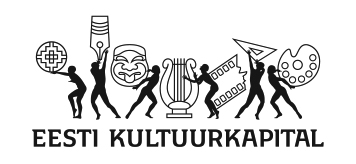Unframed: Leis, Tabaka, Rožanskaitė
The exhibition focuses on the works of three Baltic women artists – Malle Leis (1940–2017), Maija Tabaka (1939) and Marija Teresė Rožanskaitė (1933–2007) – in the late Soviet era of the 1970s and 1980s. All three of the artists challenged contemporary art discourses through non-conventional approaches to self-representation, ways of creating space and reflections on being artists.
Leis, Tabaka and Rožanskaitė were all exceptional artists in Soviet-occupied Estonia, Latvia and Lithuania. The education they got from art institutes in Tallinn, Riga and Vilnius in the 1950s and 1960s was similar in terms of its ideological and aesthetic principles, but soon they all moved beyond those principles: not necessarily by directly opposing their current art discourses, but by navigating them in ways that shifted and blurred the meanings of seemingly straightforward motifs and gestures.
Gallery
Curators’ introduction by Anu Allas and Laima Kreivytė
The title Unframed refers to the boundaries that all three artists crossed in their works, but also to a new interpretative horizon that their works create for each other. Moreover, all three artists produced a significant number of images in which the (female) protagonist steps out of the picture or turns her back on the viewer, creating visual metaphors of leaving or moving on to a new territory. In other works, the artists played with multiple frames that shift the perception of a stable and uniform reality.
Although the works of the three artists create a productive dialogue – or polylogue – they are far from similar. Rožanskaitė’s works go beyond the frame literally and metaphorically, opening inner spaces of her container-like assemblages; she later moved on to objects and installations. Early semi-abstract images by Leis challenge the optic perception, whereas her distinctive arrangements of plants, flowers and (sometimes) people in cosmic spaces undermine the hierarchies between the human and nonhuman. Tabaka is known for her large-scale figurative paintings that are often inspired by filmic depictions and have become increasingly playful, expressive and theatrical over time.
While Leis’s and Rožanskaitė’s works are closer to each other and more bound to a modernist discourse with their critical and conceptual looks at images, Tabaka stands out as a clearly postmodernist artist. In some ways, Malle Leis’s works form the glue that holds the three together: her early work connects well with Rožanskaitė’s, and her later paintings with Tabaka’s. However, the structure of the exhibition is shaped fluidly: in some sections the works of all three artists are represented equally, some sections are defined by one artist’s works with a comment or intervention by another artist’s work, some juxtapositions are based on significant similarities, and some on intriguing differences.
The exhibition is part of the Kumu Art Museum’s research and exhibition programme on Baltic regional art history, which aims to break out of national frameworks and find interconnections between the art histories of Estonia, Latvia and Lithuania. It also continues Kumu’s initiative of highlighting women artists from all historical periods.
Works displayed
Gallery
Team
Curators: Anu Allas and Laima Kreivytė
Exhibition design: Anna Škodenko
Graphic design: Tuuli Aule
Coordinators: Tiiu Saadoja and Anastassia Langinen
Works from the collections of:
Art Museum of Estonia, Tartu Art Museum, Estonian History Museum, Tartu University Art Museum, Narva Museum, Viinistu Art Museum, Latvian National Museum of Art, Latvian Artists’ Union, Zuzeum, Latvian Art Academy, Lithuanian National Museum of Art, MO Museum, Lewben Art Foundation, Tartle Art Centre, private collections
Collage: Malle Leis. Woman Goes Away. 1970. Art Museum of Estonia; Marija Teresė Rožanskaitė. X-Ray Therapy. 1977. Lithuanian National Museum of Art; Maija Tabaka. Double Portrait of the Sculptors Valda Blunava and Arta Dumpe. 1971. Latvian National Museum of Art

Press coverage
-
Gallery: Kumu exhibition showcases three Baltic female artists' works. ERR News. 03.10.23https://news.err.ee/1609120829/gallery-kumu-exhibition-showcases-three-baltic-female-artists-works
-
Female artists who pushed the boundaries in Soviet times. The Baltic Guide. 30.09.23https://balticguide.ee/en/female-artists-who-pushed-the-boundaries-in-soviet-times/

























